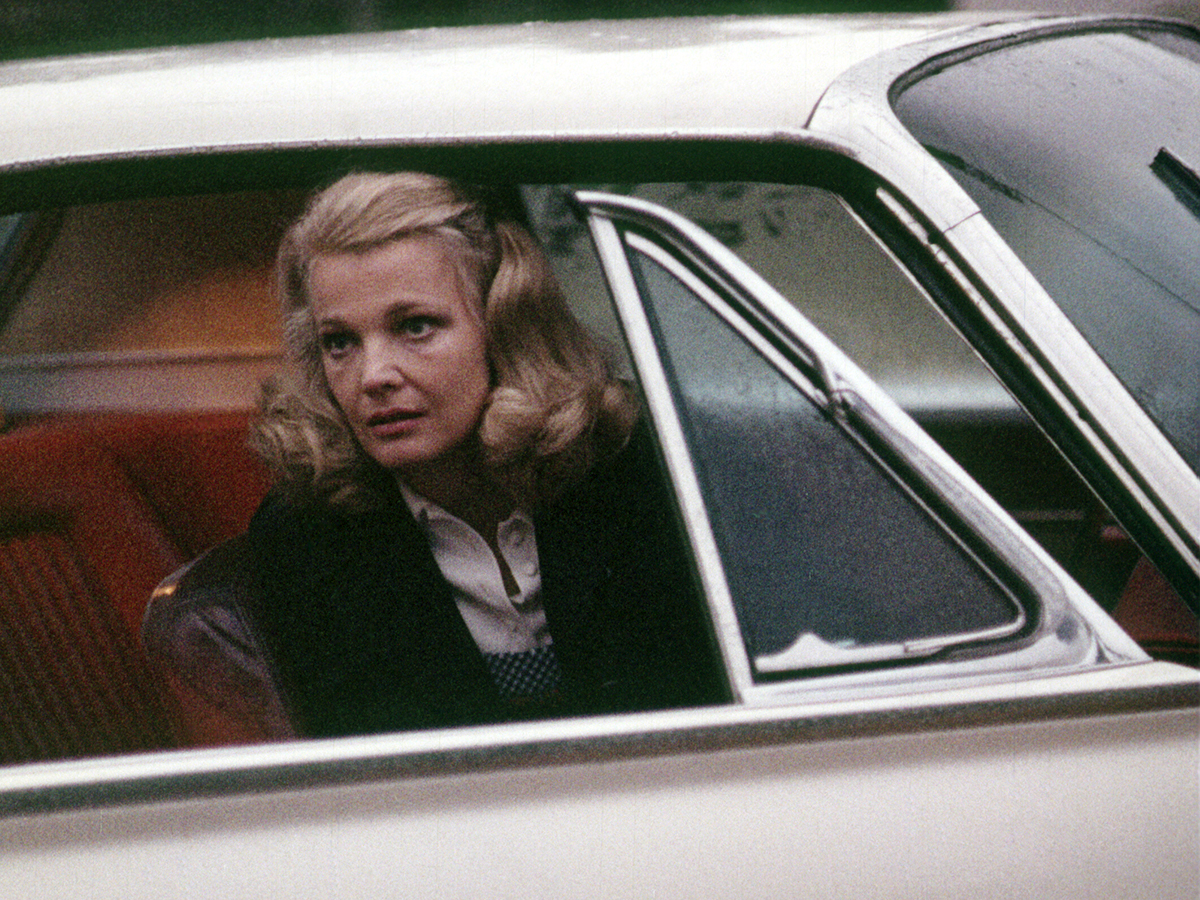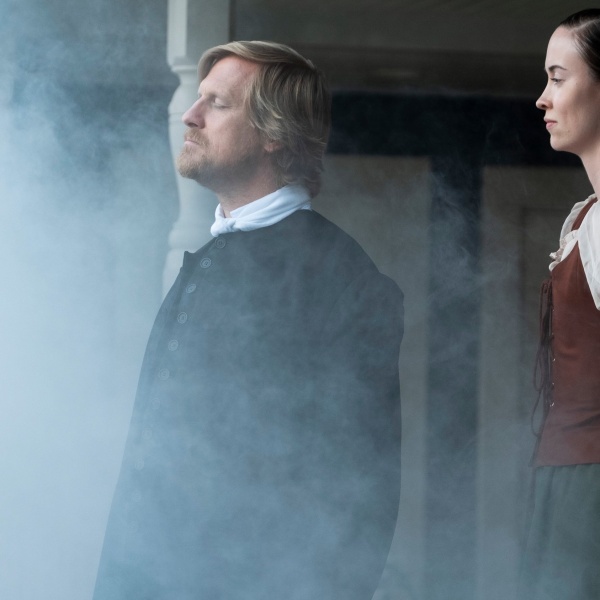When Gena Rowlands passed away last month at the age of 94, New Yorker critic Richard Brody referred to her as the greatest artist of all the actresses he had ever seen onscreen. It’s an assertion that might come across as hyperbole to someone who had never seen Rowlands’ collaborations with her husband John Cassavetes on “Faces,” “Minnie and Moskowitz,” “A Woman Under the Influence,” “Opening Night,” “Gloria,” and “Love Streams,” but even a cursory viewing of any of those performances quickly validates Brody’s claim. And while Rowlands’ work with Cassavetes is her most exalted (and properly so), she achieved great depths of emotional expression for other filmmakers like Woody Allen (“Another Woman”), Paul Schrader (“Light of Day”) and Paul Mazursky (“Tempest”) — not to mention her son Nick, who cast her in a beautiful late-career role in his tearjerker “The Notebook.”
This month both the American Cinematheque and the Criterion Channel are paying tribute to Rowlands with series that provide invaluable opportunities to discover or revisit her work in all its depth and breadth. “Gena Rowlands Remembered” is a 12-film tribute that will unspool across all three of the Cinematheque’s Los Angeles venues from September 5-24; it includes several key Cassavetes films as well as “The Notebook,” “Light of Day,” “Another Woman,” and collaborations with William Friedkin (“The Brink’s Job”) and Jim Jarmusch (“Night on Earth”). The retrospective streaming on the Criterion Channel, “Starring Gena Rowlands,” is more limited at six movies and focuses primarily on the Cassavetes films, but also features an excellent video essay by Sheila O’Malley.
The crown jewel in both series is Cassavetes’ 1974 masterpiece “A Woman Under the Influence,” a movie that contains not only Rowlands’ most fearless, powerful, and complicated performance but one of the defining performances of 20th century American film, a piece of screen acting as groundbreaking and memorable as Brando’s celebrated turn in “A Streetcar Named Desire” or Robert De Niro’s transformative work in “Raging Bull.” As Mabel Longhetti, a free-spirited housewife and mother whose psychological and emotional confinement at the hands of her more conventional husband (Peter Falk) leads to her mental collapse, Rowlands redefined the terms of authenticity in film — next to her terrifyingly convincing breakdown, even the most naturalistic performances of earlier movies start to seem fake.
The magnitude of Rowlands’ achievement is even more impressive when one considers the challenges posed to her by Cassavetes’ unconventional approach to storytelling, an approach that both enabled Rowlands to go where few other actors had and threw major obstacles in her path. First off, there’s the simple fact that as a writer-director John Cassavetes was constitutionally incapable of explaining human behavior either to his audience or his actors. (Rowlands was continually frustrated during the making of the film by Cassavetes’ refusal to answer her questions about Mabel.) He was a genius when it came to exploring behavior, and presenting it in a manner that provoked profound emotional responses and insights, but Cassavetes refused to make any of the motivations or feelings swirling around the core of his films literal or explicit, preferring to leave explanations and exposition out of the dialogue to force the audience to form its own conclusions.

Even by Cassavetes’ standards Mabel is an inarticulate role, and as Rowlands internalized the character’s anguish she found herself giving her frustrations physical manifestations in the form of idiosyncratic mannerisms and non-verbal noises. “All I know is that this woman couldn’t speak, she could not express herself,” Rowlands told film critic Judith Crist. “And when you can’t speak, when you’re playing that kind of part and becoming involved in it, then things will start happening with your body. The human spirit will not take it silently. If you cannot express something verbally, it will come out in some way, and in her it came out in bizarre physical gestures. But I didn’t plan it.”
The odd tics and gestures that Rowlands brought to the role not only convey Mabel’s inability to talk about what she’s going through but also create a sense of discomfort in the viewer that makes “A Woman Under the Influence” difficult to watch even in its most innocuous moments; the already voyeuristic quality created by Cassavetes’ unstructured visual style, in which his camera operators are largely capturing action from a distance with long lenses, is exacerbated by the fact that Mabel seems to have no filter between her emotions and her body’s expression of them — paradoxically, we start to gain a deeper understanding of her crisis than if it was communicated in more traditional means via the dialogue. Rowlands’ performance, and Cassavetes’ presentation of it, give us the sense that we’re peering into someone’s soul with an access that we really shouldn’t be allowed — it’s an invasion of privacy.
This sense of an invasion of privacy is most keenly felt in a trio of set pieces in which Cassavetes lets the drama play out in what feels like real time. They’re all sequences in which Mabel’s husband Nick — who deeply loves her but doesn’t understand her at all and is completely oblivious to her needs — places Mabel in situations of increasingly agonizing difficulty. The first sequence comes early in the movie, when Nick brings home an army of coworkers for a meal after promising Mabel a date night alone. The second is an excruciating passage in which Nick allows his mother and others to convince him to commit Mabel to an asylum. The third comprises the final act of the film and depicts Mabel’s return from the asylum to a house where nothing has really changed — yet where she seems to find some kind of temporary stability and peace as the movie concludes.
These sequences contain odd echoes of a movie Cassavetes acted in but didn’t like, Roman Polanski’s “Rosemary’s Baby.” Although the styles of the two films couldn’t be more different, both movies are harrowing depictions of a woman being imprisoned in her own home by alleged friends and family — the scene in which a roomful of people try to convince Mabel that they’re acting in her best interest by committing her is eerily similar to the moments in which Rosemary’s neighbors assure her that raising the devil’s child is her true purpose in life. The key distinction between “Rosemary’s Baby” and “A Woman Under the Influence” is that, while the performances in “Rosemary’s Baby” are undeniably excellent, the real heavy lifting when it comes to generating unease in the audience is done by Polanski’s camera placement and editing.
In “A Woman Under the Influence,” the pressure is all on the actors; by refusing to editorialize or provide emotional emphasis with his camera, to a certain degree Cassavetes lets Rowlands and her costars flail. By approximating real time, he requires that the shifts in perspective or tone that might ordinarily be helped along by an editorial transition all be convincingly articulated by the actors — all of whom, as aforementioned, have to do so with their faces and bodies, since the dialogue isn’t giving them any help either. When Nick betrays Mabel and lets relatives and her doctor talk him into committing her, we see her registering the betrayal as it happens, with Rowlands’ face seemingly responding to each particular moment rather than as part of any preconceived plan on the actor’s part.
It’s the essence of what screen acting is supposed to be, of course, but the illusion of spontaneity that Rowlands creates feels different from what most other actors do; there really is a sense that Cassavetes is making some kind of documentary-narrative hybrid, where his camera just happens to be catching real behavior on the fly. To a certain degree this assumption is accurate, as many of the responses in the scene, not just from Rowlands but the other actors reacting to her, were natural outgrowths of Cassavetes refusal to “direct” his actors, and his insistence that they not discuss their roles with each other off camera. Yet the documentary and improvisational nature of Cassavetes’ sensibility has largely been overstated (it’s well established by this point that his films were pretty carefully scripted), and attention to this aspect of his craft largely underrates Rowlands’ achievement.
Getting back to that invasion of privacy idea, there’s a feeling watching Rowlands’ most wrenching scenes that we’re not just invading the characters’ privacy, we’re invading hers. This is partly due to the mythology that has evolved around Cassavetes’ work over the years — a mythology that suggests there was often a synthesis between actor and performer in which the line between the two was completely blurred — and partly due to the fact that Rowlands’ performance is so persuasive that she feels like she must be playing herself. Yet all one has to do is look at some of the other films in the Cinematheque’s series to see how different Rowlands’ turn as Marion in “Another Woman” is from her part in “A Woman Under the Influence,” and how different that performance is from what she does even in other Cassavetes movies — she’s equally convincing in all these roles, yet she can’t possibly be playing herself every time.
Indeed, the refined Rowlands had a lot less in common with the unruly Mabel than her husband did — in her stubborn inability to adhere to society’s definition of “normal” behavior, Mabel feels more like a Cassavetes surrogate than a natural extension of Rowlands’ personality. Yet for all practical purposes Mabel is Rowlands in the way that Travis Bickle is Robert De Niro; it is impossible to think of any other actor playing the part at all, let alone excelling in it. That the same can be said of Jeannie in “Faces,” or Sarah in “Love Streams,” or the title role in Cassavetes’ magnificent “Gloria” is a testament to Rowlands’ range — and an argument for getting to the Cinematheque or Criterion Channel as soon as possible to encounter it.
“Gena Rowlands Remembered” runs at the American Cinematheque September 5-24. “Watching Gena Rowlands” is currently streaming on Criterion.





